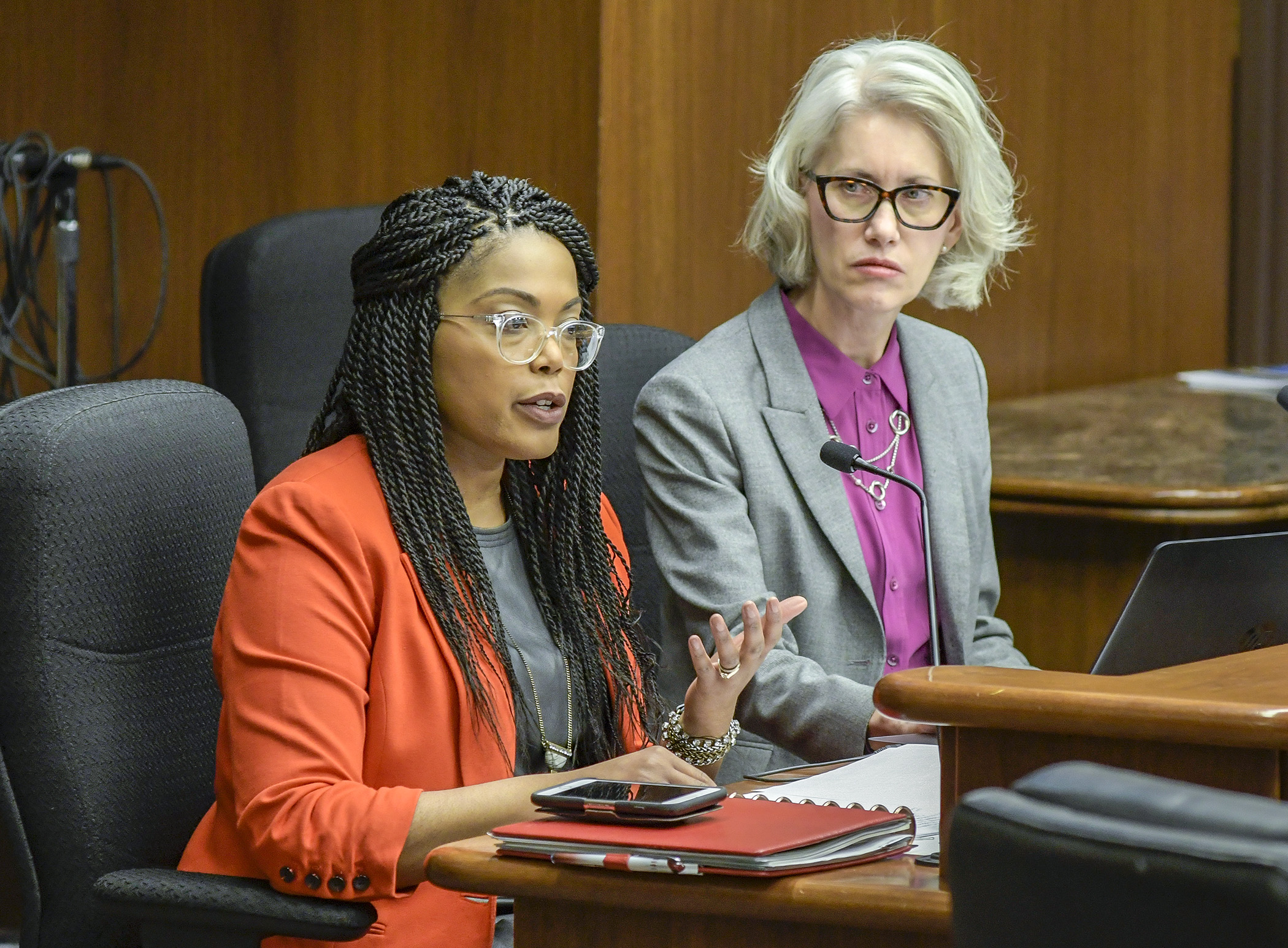Task Force presents possible solutions to statewide housing shortage

The growing costs of housing, health care, education, and transportation have outstripped average income increases, making home ownership increasingly difficult for Minnesotans to achieve.
Housing shortages are a statewide problem, though each community faces its own specific challenges, requiring “tailored” solutions, Jeanne Crain, co-chair of the Governor’s Task Force on Housing, told the House Housing Finance and Policy Division Wednesday.
“No one entity or sector” can solve the problem, but “we all have a role” to play in helping all Minnesotans prosper, she said.
Former Gov. Mark Dayton established the task force in 2017, charging its 28 members to find solutions to the problem. The group travelled to Austin, Little Falls, Sleepy Eye, Duluth, Crookston, Minneapolis, Golden Valley, and St. Paul over a six-month period to talk with citizens impacted by the state’s housing shortage.
On average, Minnesota homes are 26 percent more expensive than in neighboring states and rents are on the rise, according to a report the task force published in August 2018.
It predicts Minnesota will need an additional 300,000 homes and apartments by 2030 in order to meet the demand.
[WATCH: Full video of the House Housing Finance and Policy Division hearing]
“We need homes and apartments that meet [the needs of] all kinds of family types and income levels,” said Acooa Ellis, task force co-chair.
As outlined in the report, the main goals of the task force are to: commit to homes as a priority, preserve the homes we have, build more homes, increase home stability, link homes and services, and support and strengthen home ownership.
The 30 recommendations the group made to meet these goals include:
- creating a dedicated, permanent funding source for affordable homes;
- incentivizing private-market owners to keep rental units affordable to low-wage families;
- increasing support for the rehabilitation of public housing;
- expanding the range of housing types across Minnesota communities;
- growing the pool of talent in Minnesota’s building trades, so the sector can meet current and future demand;
- defining and cracking down on predatory rental practices, including excessive evictions;
- expanding programs and providers who assist individuals in finding, securing, and retaining affordable homes;
- encouraging employers and foundations to support home purchases; and
- increasing access to homeownership resources for the large number of income-ready households of color who want to buy.
The task force’s work will continue through Prosperity’s Front Door, a program encouraging business, civic, and political leaders to raise awareness on the need for increased affordable housing options in their communities, said Warren Hanson, president and CEO of the Greater Minnesota Housing Fund.
Housing is an important part of encouraging good outcomes in the fields of education, health, and even public safety. But it’s important for people to realize that housing is also directly related to economic success, presenters said.
“We are losing a competitive advantage that has always been a hallmark of our state,” Crain said. Limited housing makes it difficult to attract or expand businesses.
Questions from division members ranged from inquiries about data on homelessness to the availability of rental units for large families and the impact of permit fees and building regulations.
The division will be digging into many of the issues touched on Wednesday in greater detail over the course of this session, Division Chair Rep. Alice Hausman (DFL-St. Paul) said.
Related Articles
Search Session Daily
Advanced Search OptionsPriority Dailies
Ways and Means Committee OKs proposed $512 million supplemental budget on party-line vote
By Mike Cook Meeting more needs or fiscal irresponsibility is one way to sum up the differences among the two parties on a supplemental spending package a year after a $72 billion state budg...
Meeting more needs or fiscal irresponsibility is one way to sum up the differences among the two parties on a supplemental spending package a year after a $72 billion state budg...
Minnesota’s projected budget surplus balloons to $3.7 billion, but fiscal pressure still looms
By Rob Hubbard Just as Minnesota has experienced a warmer winter than usual, so has the state’s budget outlook warmed over the past few months.
On Thursday, Minnesota Management and Budget...
Just as Minnesota has experienced a warmer winter than usual, so has the state’s budget outlook warmed over the past few months.
On Thursday, Minnesota Management and Budget...